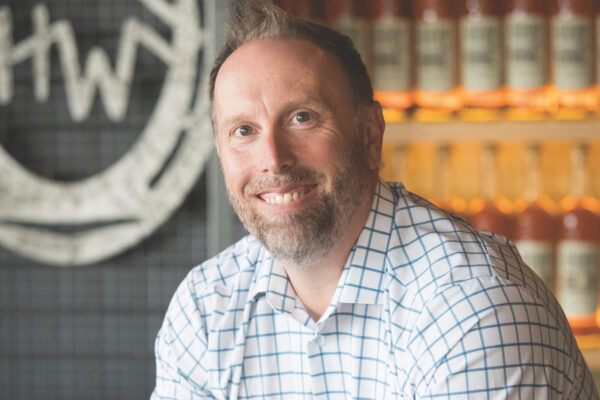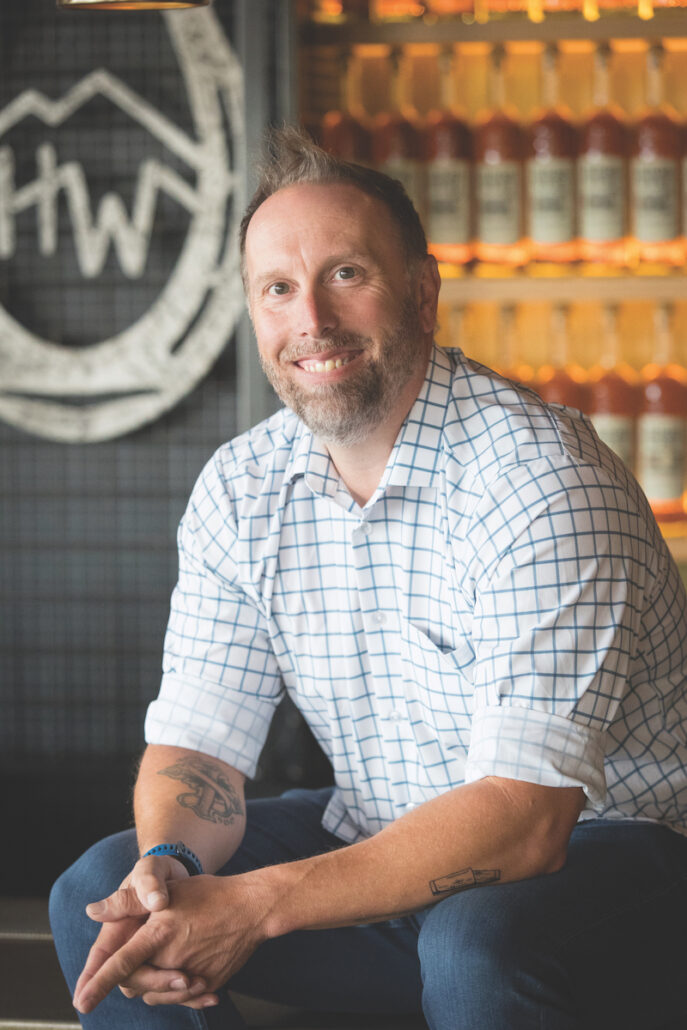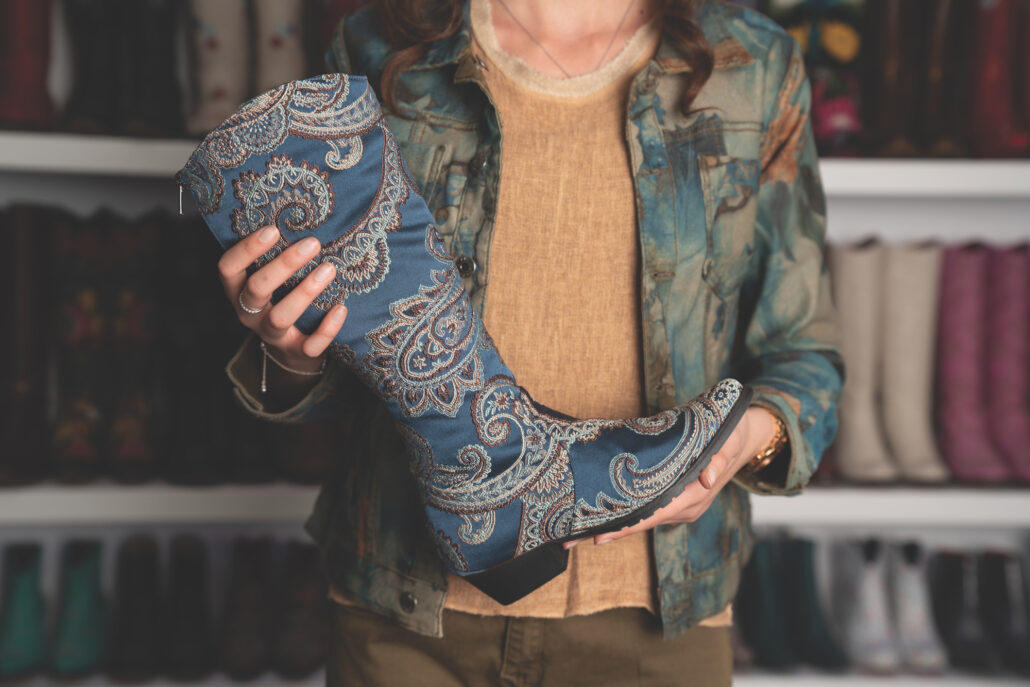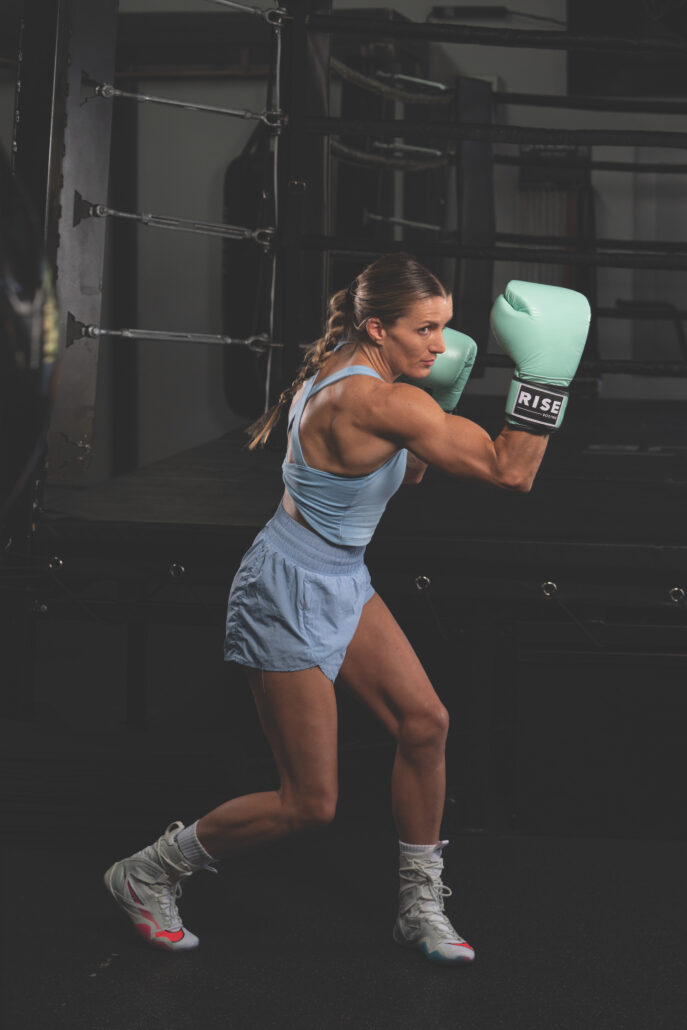
Unconventional cocktails in Park City
Utah’s liquor laws unknowingly help creatives like Steve Walton shine
Winter/Spring 23-24
Written By: Darby Doyle | Images: Gillian Hunter
Growing up in Southend-on-Sea, England — a town perched on the English Channel, southeast of London — Steve Walton never dreamed he’d end up managing an American whiskey brand and raising a family in Park City, of all places.
“I was in a Tesco graduate training program, in a very competitive position, and set to be on a management tract,” Steve says of his early-20s job in supermarket management. He worked at Tesco by day, and skateboarded with friends and “pulled pints” at a local pub by night.
And then in 2004, he diverted onto a completely different career — and life — path.
“I told my manager, ‘I can’t get stoked putting baked beans on a shelf,’ and amazingly, they let me stay until I had another job lined up,” Steve says of turning his life upside down. He applied for outdoorsy positions all over the world, from surf shops in Portugal to ski resorts in the U.S. — even though he had never skied or snowboarded a day in his life.
With a work visa in hand, Steve first headed to Mt. Snow, Vermont, for a job in a gear rental shop. The following summer, he was vacationing at Lake Powell and serendipitously met a recruiter from Park City. “I figured I’d snowboard in Park City for a winter and then maybe move on to Vail or Keystone. But I was having such a blast here, I didn’t see any reason to move on,” says Steve, reiterating the familiar story of committing for a “maybe” season and then opting to stay and set down roots.
Steve worked as a liftie during the day, eventually becoming assistant manager of lift operations, and bussed tables at the Waldorf Astoria at night to afford the Old Town house he rented with a half-dozen other ski bums. “One night, a bartender quit, and I jumped in. And then I quickly realized I actually had no idea what I was doing,” he says of mixing cocktails.

The early 2000s were a heady time in U.S. cocktail culture, and Steve’s newfound enthusiasm for bartending coincided with the renaissance of artisanal spirits and the rebirth of craft cocktails nationwide.
“I tried a High West cocktail and fell in love,” he says of visiting the High West Saloon. “I convinced them to give me a few shifts during Sundance,” which then spiraled into a complete career change to full-time hospitality work. “My very first day at High West, someone got fired for showing up drunk. The manager said, ‘A party is showing up in two hours. You’re in charge, and you have a full-time job if you want it.’” Alongside bartender Holly Booth, Steve became co-manager, and together they expanded the award-winning High West bar program, which has since garnered local and national acclaim (including multiple nods from the James Beard Foundation).
Steve wryly credits the (ahem) unique nature of Utah’s liquor laws — which place strict caps on the volume of base spirit and other liquors — for High West’s approach to building great cocktails with the best ingredients.
“Our old-fashioned is a blend of High West bourbon and double rye because of Utah’s primary spirit limit,” he gives as an example. “It’s not the way it would usually be served, but the bourbon-rye combination gives this drink an unexpected layer of complexity.”
Now, as the manager of hospitality for High West brands, Steve reflects on how far both he and Utah’s cocktail culture have come in the past two decades. “There are some amazing spirits, truly creative cocktails, and great, unconventional bars in Utah now,” he says. And the only baked beans he’s stoked about are the ones he’s warming up for his wife and two daughters after they spend a day together adventuring in the mountains.

